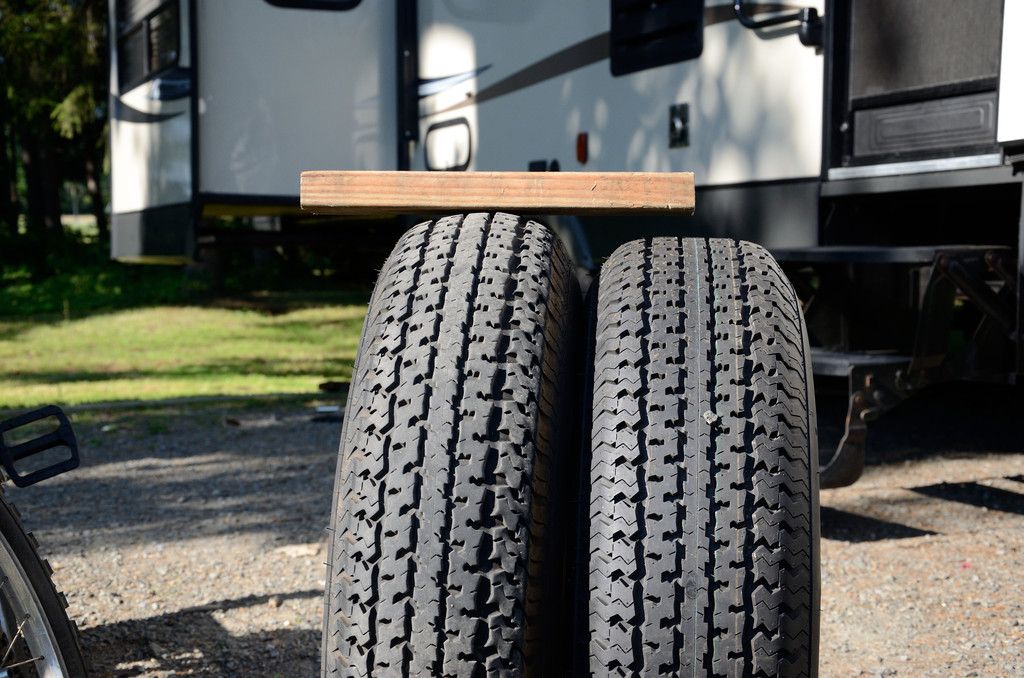JIMNLIN wrote:
Also due to braking rotational forces the rear axle brakes tend to lift the front axle a bit through the equalizer bar on hard braking events. If I had tires different in diameter I ran the larger diameter tires on the front axle. Doing so helps eliminate flat spotting.
I hadn't thought about this. Do you think spread axles would behave differently? I would have guessed that the front axles would get more weight on them in a hard stop similar to what happens with a car where the rear tires unload.
scbwr wrote:
I would go ahead and buy two more Maxxis tires and not have to be concerned about any potential problems from running different tires on each axle. On the other hand, you could take it down the road on a trip and see if you have any problems.
Right now the jury is still out on these tires. Just one went bad. If I catch a second one going then the other two will be gone.
Here's what the bad one looked like:

mkirsch wrote:
You can run the E-rated tires at 65PSI no problem. They are only carrying a D-rated load, and only need to be inflated to D-rated pressure to carry it.
In fact at 80PSI you will probably see abnormal wear in the middle of the tread.
I know I can run them at 65 PSI. I didn't consider that the wear might be an issue. I suspect that the tires will age out before they wear out though.
Isn't heat the biggest enemy of these tires - and higher PSI == less heat?
Also, when backing and scrubbing the tires, won't more pressure keep the tire more stable and give a slightly higher chance of preventing damage from side pressures?
I had individual wheel weights done with full fresh water and packed for a trip. Here are the readings:
Left Front 2000
Right Front 1900
Left Rear 1800
Right Rear 200
Maxxis has a load chart for ST225/75R15 tires:
PSI Weight
25 1430
30 1600
35 1760 (B)
40 1880
45 2020
50 2150 (C)
55 2270
60 2380
65 2540 (D)
70 2620
75 2720
80 2830 (E)
Why not just run the tires at 50PSI since I know the max weight with full water tank ready for a trip is 2,000 lbs per axle?
mkirsch wrote:
People need to understand that the maximum inflation pressures are not law. There are no "tire pressure police" lurking in the bushes waiting for you to only put 79psi in those load range E tires, so they can drag you and your family off to a gulag in Siberia.
Ha. Not worried about tire police. Only interested in maxing out the life of the tires.
Also, I did check and the rims do support 80 PSI as well....
I also found this:
Goodyear: Weighing Your RVUnless trying to resolve poor ride quality problems with an RV trailer, it is recommended that trailer tires be inflated to the pressure indicated on the sidewall of the tire. Trailer tires experience significant lateral (side-to-side) loads due to vehicle sway from uneven roads or passing vehicles. Using the inflation pressure engraved on the sidewall will provide optimum load carrying capacity and minimize heat build-up.
